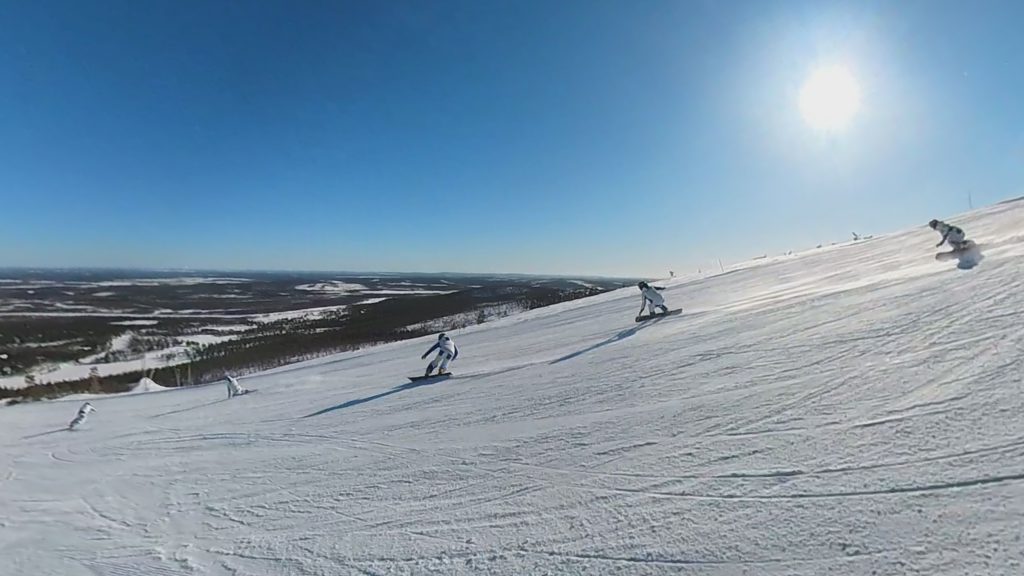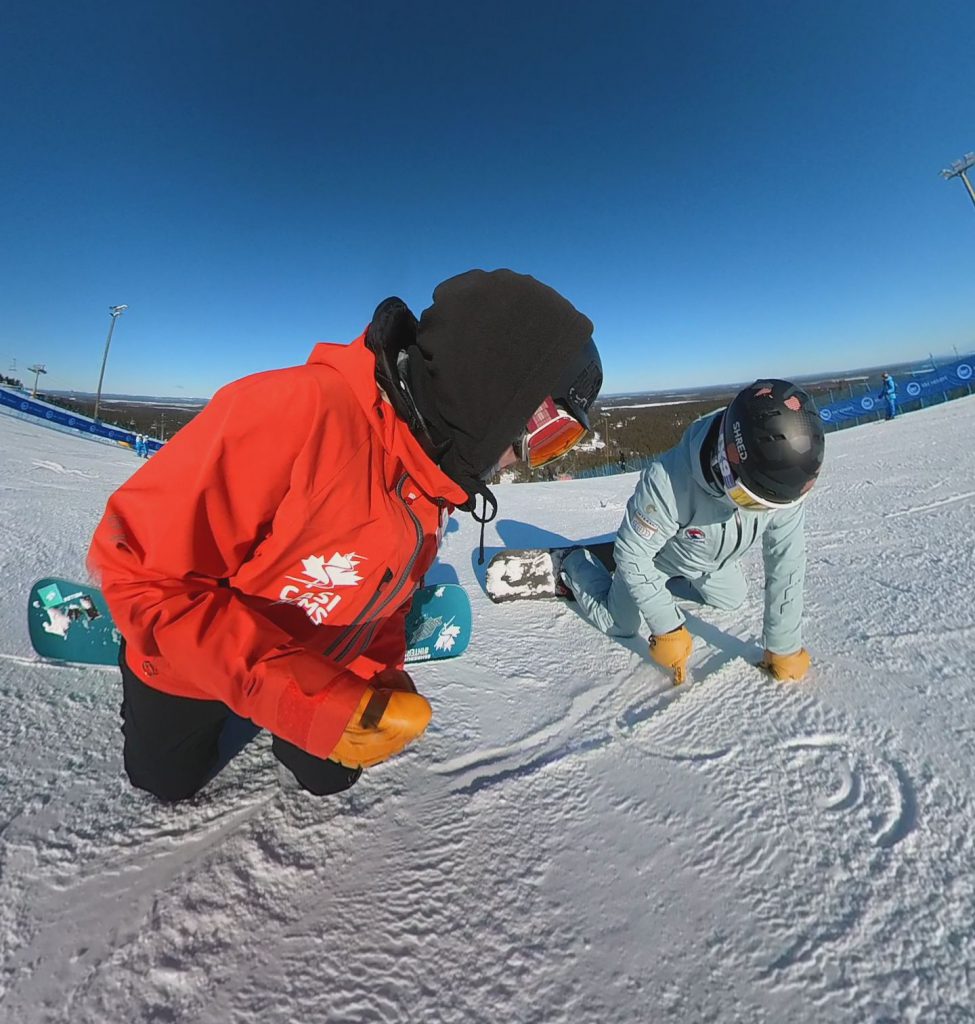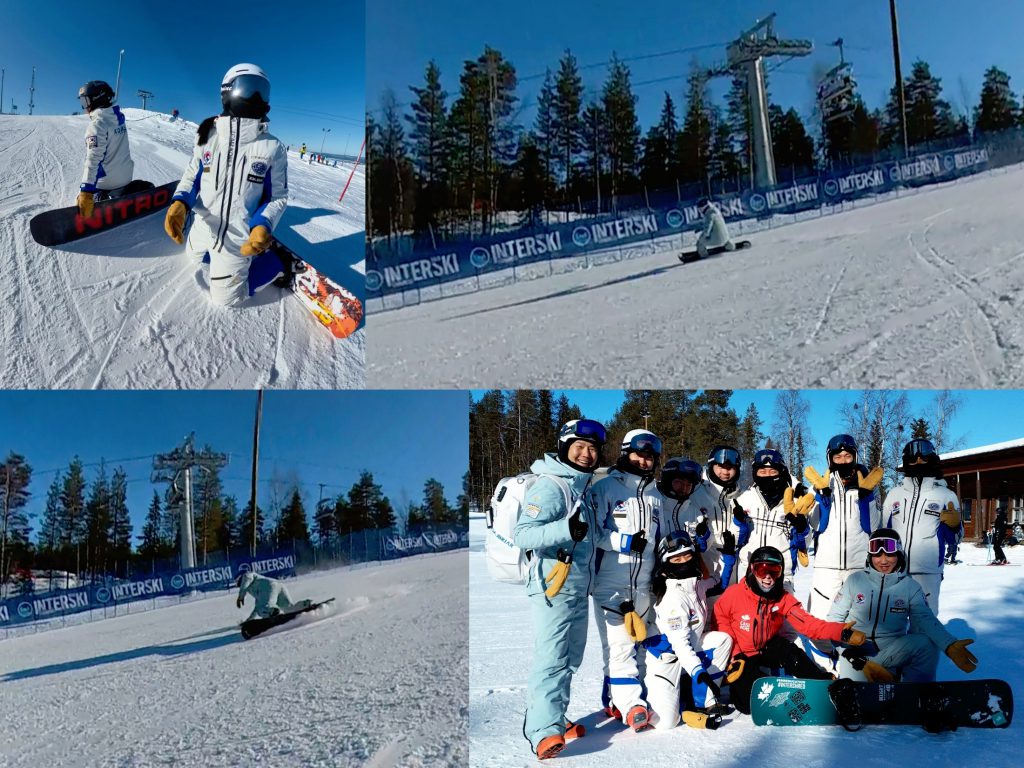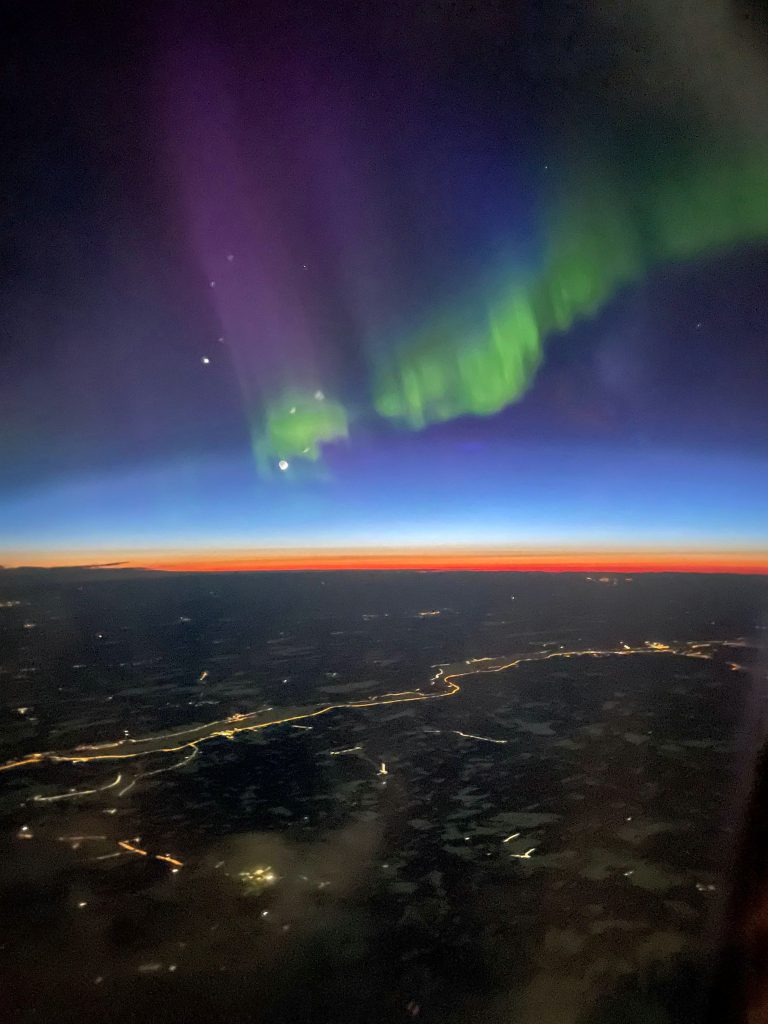The first thing I learned about ski instruction in Germany is that there are multiple organisations that certify ski instructors in Germany. Today’s presentation was presented by snowboarders from the German Ski Association – Deutscher Skiverband (DSV), also attended by a snowboard representative from the German Ski Instructors Association – Deutsche Skilehrerverband (DSLV).
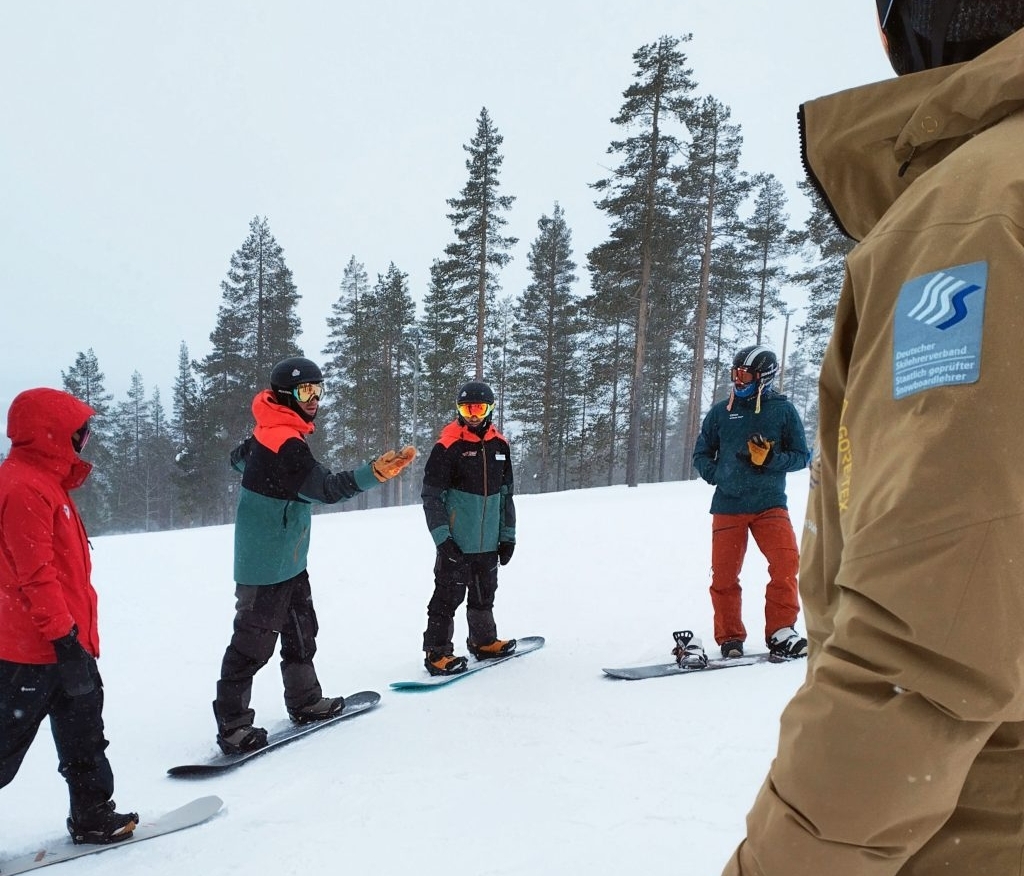
The German (DSV) model is elegant in its simplicity and usefulness as a descriptive and analysis tool.
3 Points to their Model of Movement:
1. Position — the Germans have a base athletic position they teach to beginners and new instructors, but very quickly their system emphasizes riders changing the position to be specific to personal preference and the task the rider wants to acccomplish.
Any position is suitable as long as it allows riders to accomplish their task; although they emphasized that most of their corrections when teaching come from position faults.
2. Actions — this covers all movement patterns that move the snowboard. Starting from ground up, these are:
- ankle dorsiflexion/plantarflexion,
- lower joints: vertical/along the length of snowboard,
- rotational and counter-rotational from hip joint, hips and body,
- head and eyes: controlling and stopping rotation, planning line and making decisions.
3. Regulations — these are movements a rider does not intend but just keep a rider upright. These are neither good nor bad, but are a key analysis tool. When you’re a beginner the regulation movements you make are very large as you get better the regulation movements should become smaller and smaller.
To apply this model to movement analysis an instructor looks for Regulation movements as well as ability to perform the task. If the Regulations are detrimental to the rider’s performance, then the first step is to provide improvement to Position. After that (or if Position is not the cause of the negative Regulations), then an instructor will focus on improving Actions with a focus from the snowboard up.
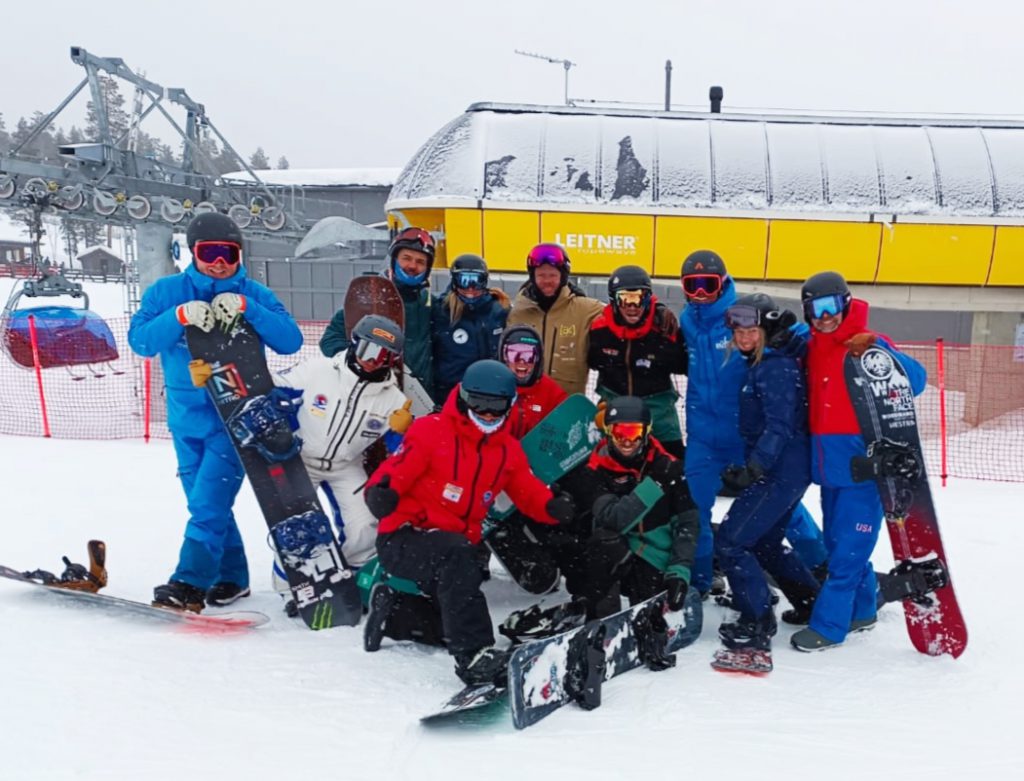
Fun fact: the Germans will usually use “frontside and backside turns” instead of “toeside and heelside turns”.


